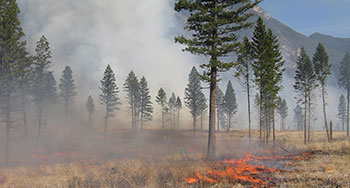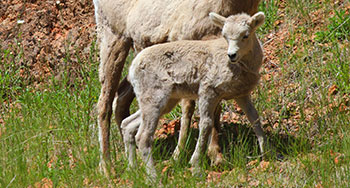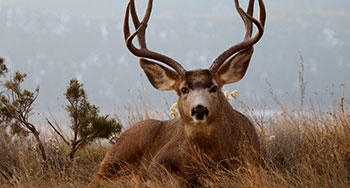
Conserving and restoring ecosystems
Kootenay National Park
When our research and monitoring work identifies damaged or altered ecosystems, we look for ways to fix the problem. Our restoration projects aim to conserve the full range of plants and animals normally found in the park. Diversity helps keep park ecosystems healthy and resilient.
Grasslands and open forest
Along the southern border of Kootenay National Park lies an area of strikingly beautiful grasslands and open forest. It’s hard to imagine now, but prior to 2001 a dark forest of tightly-packed Douglas-fir trees and moss grew here. Long-term restoration projects are ensuring this increasingly rare ecosystem isn’t lost again.
An ecosystem at risk
Grasslands are British Columbia's most endangered habitat. They cover just 1% of the province, but are home to 30% of the province’s species at risk.

Rocky Mountain bighorn sheep is a species at risk in British Columbia. The Radium-Stoddart herd includes 150 bighorn sheep living in the south end of Kootenay National Park and just outside the park. These sheep share space with other ‘at risk’ grassland species, including the American badger. Helping bighorn sheep will help them too.
Important Habitat for bighorn sheep
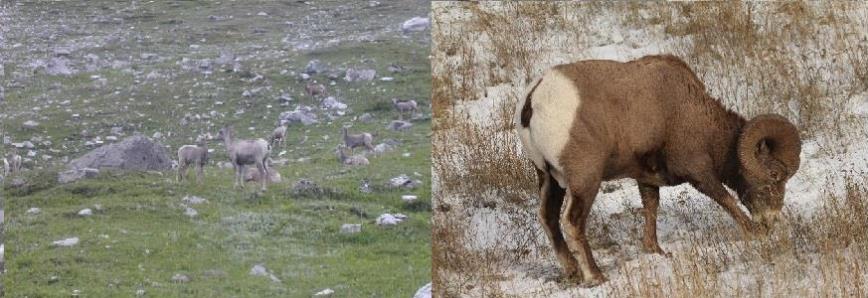
Home on the range
The Radium-Stoddart bighorn sheep have both a summer and a winter home – just like some lucky people. They spend the summer feeding in lush alpine meadows inside the park. In the fall, they move down to their winter range on the benchlands above the Columbia River. Here, they forage along dry southwest facing slopes, digging through a thin layer of snow to get at the grass.
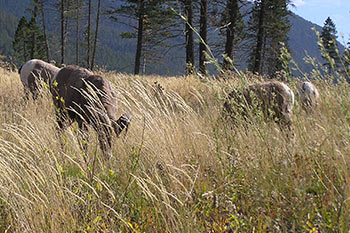
The beauty of bunchgrass
This fire-adapted native grass packs on the protein during the summer growing season. During the winter, the dried grass blades provide nutritious food for sheep, deer and elk.
An open plan design
For thousands of years, this area of the Columbia Valley was an ideal winter home for sheep. It was covered with scattered firs and grasslands maintained by frequent visits of fire. The sheep liked this open plan design. There was plenty of grass to eat. The scattered trees offered protection from the weather and left open sight lines so they could spot predators coming and escape to nearby cliffs. Winter could be tough for bighorn sheep, but this was as good as it gets.
What happened to the grasslands?

In the past, low intensity surface fires occurred every 5-30 years or so. These fires were started by summer lightning storms and Indigenous people who burned to green up areas and attract game.

As the upper Columbia Valley was settled, the landscape changed. Fires were suppressed and the open habitats favoured by sheep became choked with dense stands of trees. The remaining patches of open habitat became overgrazed, forcing the sheep into urban environments.
Restoration projects
Long term restoration projects are bringing back Kootenay’s grasslands and open forest.
Learn more:
Related links
- Date modified :
